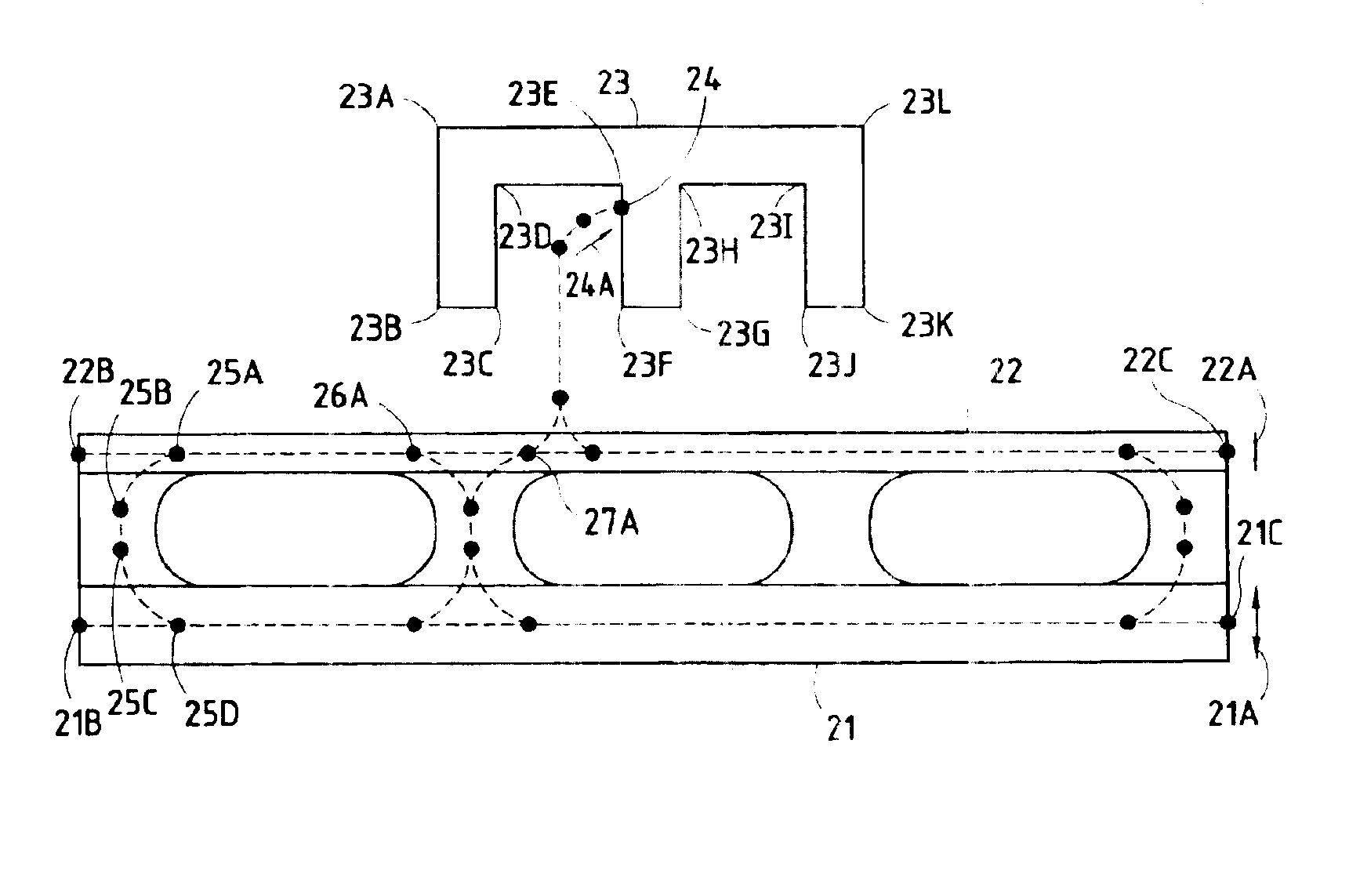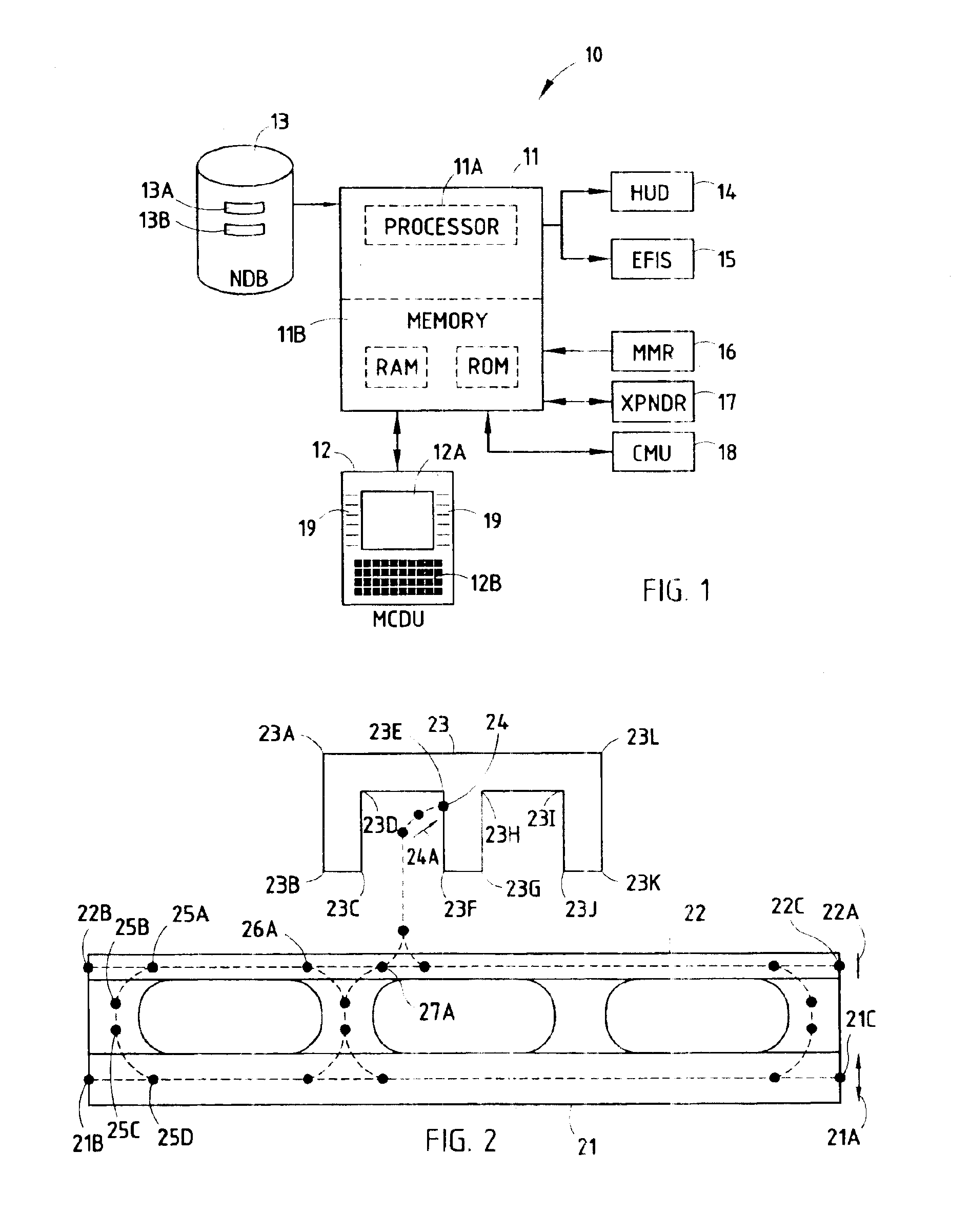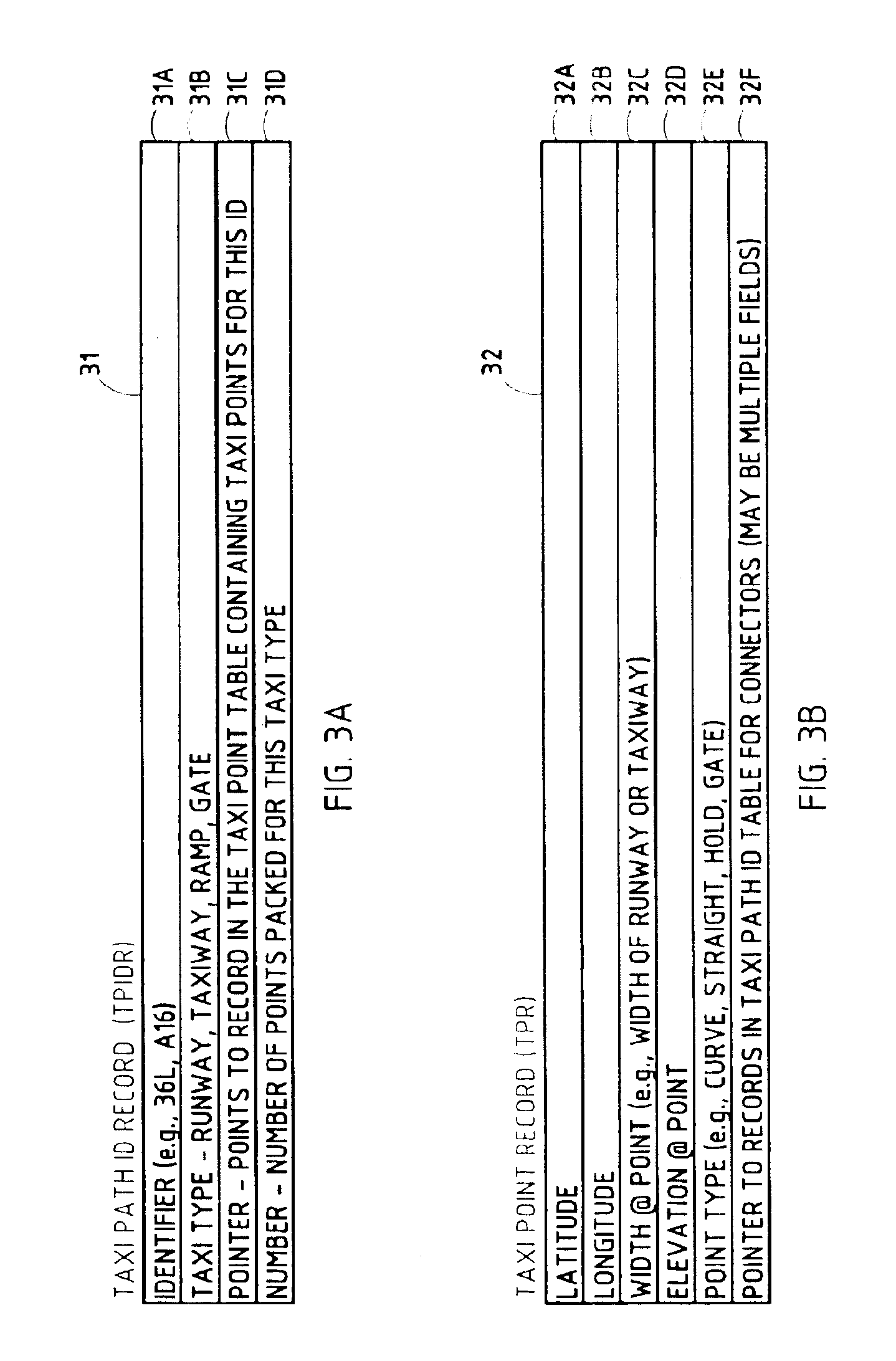Airport map system with compact feature data storage
- Summary
- Abstract
- Description
- Claims
- Application Information
AI Technical Summary
Benefits of technology
Problems solved by technology
Method used
Image
Examples
Embodiment Construction
Reference will now be made in detail to the present preferred embodiments of the invention, examples of which are illustrated in the accompanying drawings. Wherever possible, the same reference numerals will be used throughout the drawings to refer to the same or like parts.
Referring to FIG. 1, an exemplary embodiment of the taxi planning system according to the present invention is shown, and is designated generally throughout by reference numeral 10. The components of the taxi planning system of the present invention will first be briefly described and then described in detail. The most common use for the taxi planning system 10 is as an integrated element in the FMS of an aircraft, such as a commercial passenger or cargo jet, and therefore the following discussion will describe the invention in relation to such an application.
The taxi planning system 10 according to the invention is shown with related aircraft systems. Any and all of the aircraft systems can comprise the taxi pla...
PUM
 Login to View More
Login to View More Abstract
Description
Claims
Application Information
 Login to View More
Login to View More - R&D
- Intellectual Property
- Life Sciences
- Materials
- Tech Scout
- Unparalleled Data Quality
- Higher Quality Content
- 60% Fewer Hallucinations
Browse by: Latest US Patents, China's latest patents, Technical Efficacy Thesaurus, Application Domain, Technology Topic, Popular Technical Reports.
© 2025 PatSnap. All rights reserved.Legal|Privacy policy|Modern Slavery Act Transparency Statement|Sitemap|About US| Contact US: help@patsnap.com



